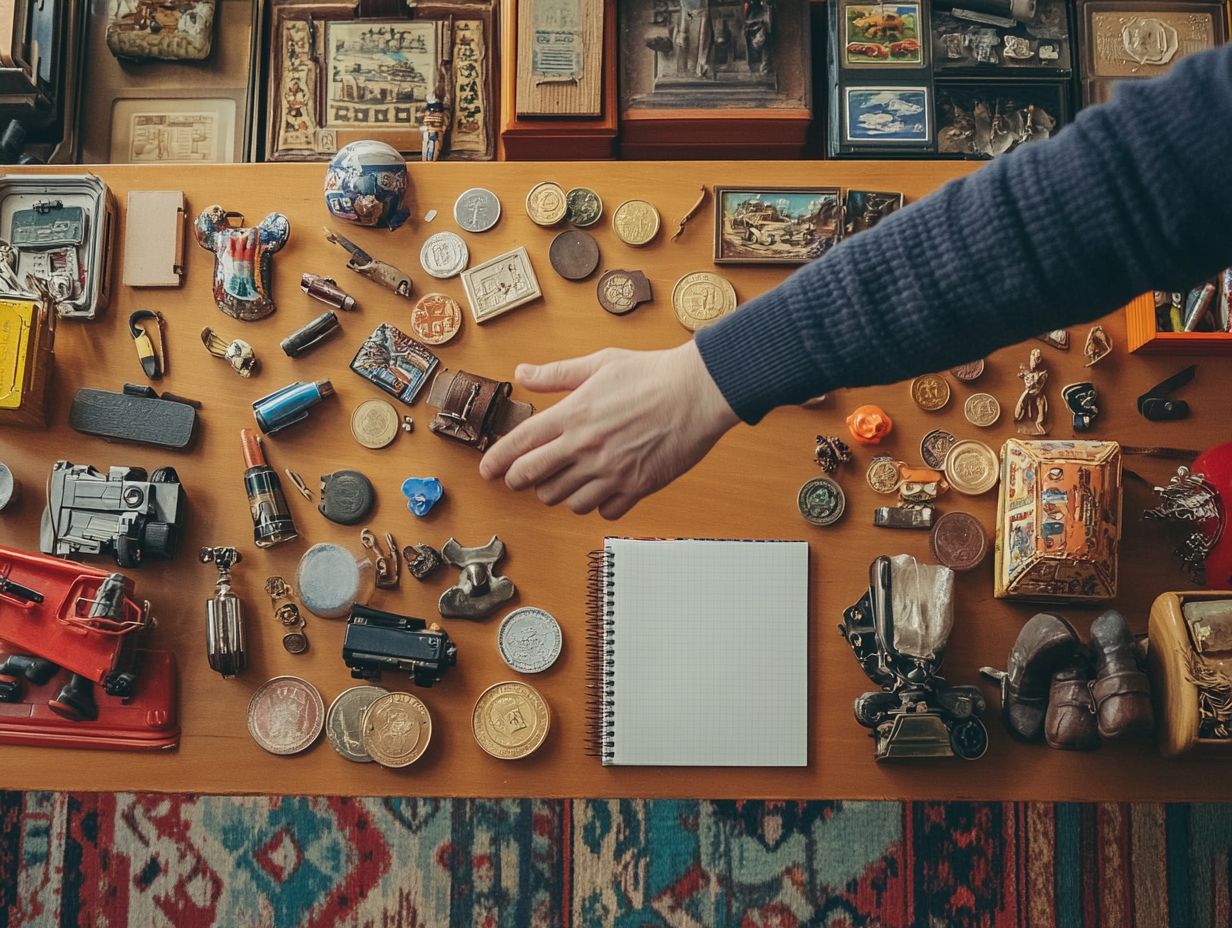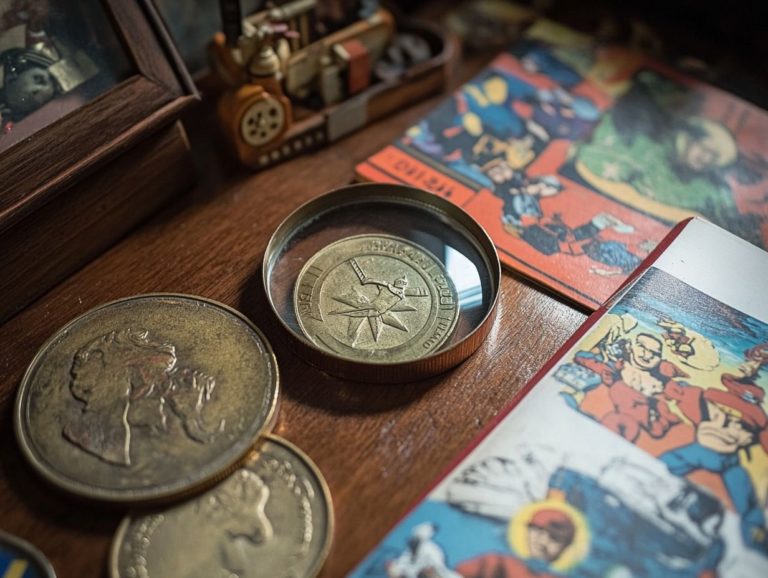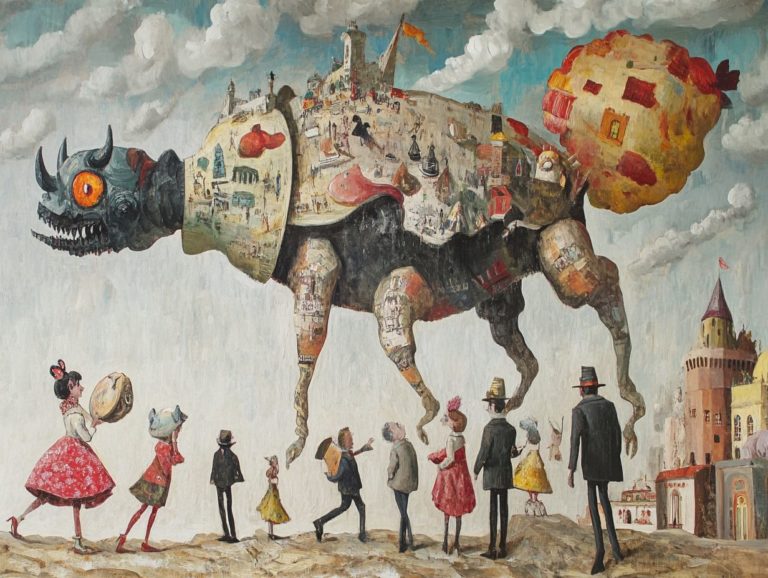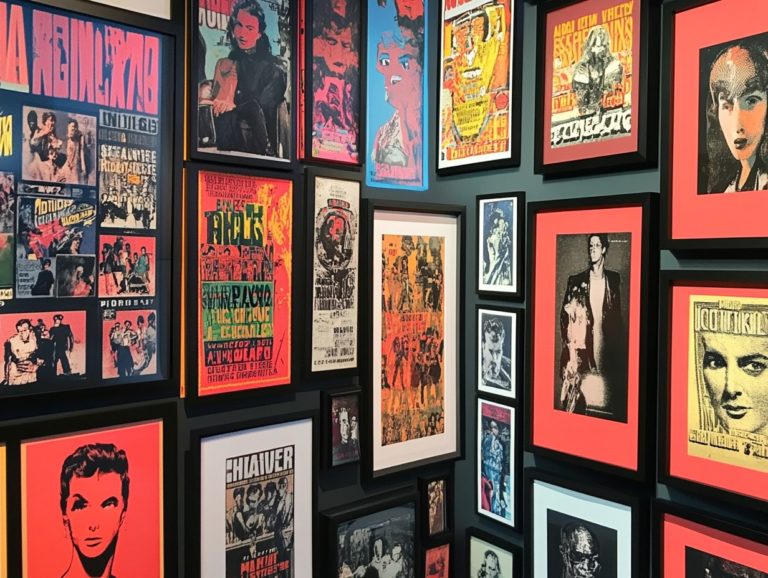The Art of Negotiation in Collectible Sales
Get ready to unlock the secrets of negotiation and transform your collecting experience!
Negotiation is an indispensable skill for anyone navigating the world of collectibles.
Whether you re a seasoned collector or just beginning your journey, mastering the art of negotiation can be the key to securing that prized item at just the right price.
This guide delves into the essentials of negotiation, covering everything from market research and budget setting to techniques that cultivate positive interactions with sellers.
You ll discover the intricacies of negotiating with both private sellers and dealers, ensuring you re fully equipped to close the deal effectively.
Prepare to refine your negotiation skills and elevate your experience in collecting!
Contents
- Key Takeaways:
- The Importance of Negotiation in Collectible Sales
- Preparing for Negotiations
- Effective Negotiation Techniques
- Negotiating with Different Types of Sellers
- Closing the Deal
- Preguntas Frecuentes
- Qu se entiende por “El Arte de la Negociaci n en Ventas de Coleccionables”?
- Por qu es importante la negociaci n en las ventas de coleccionables?
- Cu les son algunos consejos clave para una negociaci n exitosa en ventas de coleccionables?
- C mo se determina el precio inicial en una negociaci n por un coleccionable?
- Qu estrategias se pueden utilizar para superar desacuerdos durante la negociaci n por un coleccionable?
- Es posible negociar por coleccionables en l nea?
Key Takeaways:

Negotiation is a crucial skill in the world of collectible sales, allowing collectors to secure the best deals and build strong relationships with sellers.
Proper preparation, including researching the market and item, setting a budget and goals, is key to successful negotiations in collectible sales.
Effective negotiation techniques such as active listening, building rapport, and creating win-win scenarios can lead to successful outcomes when dealing with different types of sellers, whether private sellers or dealers/auction houses.
The Importance of Negotiation in Collectible Sales
Negotiation is crucial for art collectors.
Negotiation is key to understanding both the financial and emotional aspects of buying contemporary art.
This process often encompasses a nuanced interplay of negotiation skills that can greatly influence the results of art sales.
By honing your negotiation skills, you can boost your confidence in the art scene, fostering successful partnerships with galleries and dealers while also solidifying your credibility in the art industry.
Why Negotiation is Necessary for Collectors
Negotiation is an essential skill for you as an art collector, giving you the power to secure fair market value for your acquisitions while gaining insight into the motivations behind the pricing set by dealers and auction houses.
By mastering negotiation, you can effectively navigate the art market, which changes based on trends and what buyers want.
This understanding not only helps you strike better deals but also equips you to read sellers’ cues, ensuring you approach discussions with the right mindset.
Honing your negotiation skills fosters confidence, enabling you to advocate for your interests while nurturing respectful relationships with sellers.
Ultimately, robust negotiation tactics can lead to significant financial savings and an enhanced collection, allowing you to fully showcase the potential of the artworks you desire.
Preparing for Negotiations
Preparing for negotiations is an essential step in your art buying journey. It demands that you dive deep into thorough research on current market trends.
By doing so, you can establish a realistic budget and set clear goals for your acquisitions, ensuring a more informed and strategic approach to your investments.
Researching the Market and Item
Researching the art market and the specific item you’re interested in is crucial for you as a collector. It arms you with valuable insider information that can sharpen your negotiation tactics.
By diving into various resources, like analyzing auction results, you can uncover insights into recent pricing trends and market demand for similar pieces.
Consulting with seasoned art appraisers adds another layer of depth to your understanding, as they can provide expertise in evaluating the quality and provenance (the history of ownership) of artworks.
This comprehensive knowledge not only boosts your confidence during negotiations, but also leads to more informed decisions, helping you navigate the often intricate landscape of art acquisitions.
Ultimately, a well-rounded grasp of the market will significantly enhance your ability to approach both buying and selling with greater success.
Don’t miss out! Start applying these techniques right away to elevate your collecting journey.
Setting a Budget and Goals

Setting a budget and establishing clear goals is essential to your negotiation process. This approach allows you to tackle art purchases with a well-defined framework that enhances your negotiation strategies.
When you outline your financial limits and desired outcomes, you create a roadmap. This roadmap simplifies your decision-making and boosts your confidence during discussions.
This clarity aids in evaluating pricing strategies, as your possibilities become framed within achievable parameters. By grasping how market prices fluctuate and recognizing the value of your desired artwork, you can negotiate with greater effectiveness.
Having a structured plan gives you the power to make informed choices, ensuring you won t overspend or settle for less than your objectives. Ultimately, this leads to successful acquisitions that align perfectly with your vision.
Effective Negotiation Techniques
By implementing effective negotiation techniques like active listening and building good relationships, you can create win-win scenarios in art transactions. This approach not only enhances the process but also builds good relationships between you, the art collector, and the sellers.
Active Listening and Building Rapport
Active listening and building rapport are essential skills in negotiation, enabling you, as an art collector, to grasp the perspectives and motivations of sellers. This understanding can profoundly impact the dynamics of your negotiations.
By genuinely engaging with the expressions and words of a dealer or auction house representative, you can uncover the underlying interests that drive the sale. For example, asking open-ended questions not only shows your genuine interest but can also reveal valuable insights about the piece s history or the seller’s emotional attachments.
When you establish rapport through respectful dialogue and shared passions, both sides are more inclined to collaborate, fostering transparent discussions. This enhanced understanding creates an environment ripe for successful agreements, ultimately enriching your negotiation experience.
Creating Win-Win Scenarios
Creating win-win scenarios during negotiations ensures that both art collectors and sellers walk away feeling satisfied, which is key to nurturing long-term relationships in the art industry.
By prioritizing clear communication and active listening, you can uncover the underlying needs and motivations of both sides involved. This approach not only deepens your understanding but also opens the door to alternative solutions that benefit everyone.
Employing strategies like collaborative brainstorming and open-ended questioning allows you to identify creative options, effectively addressing concerns.
Ultimately, this cooperative dynamic leads to agreements that satisfy all sides and builds trust, paving the way for future collaborations and enhancing your reputation within the art community.
Negotiating with Different Types of Sellers
Negotiating with various types of sellers whether private sellers, dealers, or auction houses demands a tailored approach. Each selling environment presents its own unique dynamics, and understanding these nuances allows you to craft strategies that resonate effectively with each type of seller.
Private Sellers vs. Dealers/Auction Houses

When you negotiate with private sellers, you often find yourself in a more flexible pricing environment. In contrast, dealing with galleries and auction houses typically means navigating stricter pricing structures and established negotiation outcomes.
This distinction underscores the need for a keen understanding of the dynamics at play. Private sellers may be driven by personal motivations like needing quick cash or having an emotional attachment to their items which can create opportunities for you to secure advantageous deals.
On the flip side, galleries and auction houses work with curated inventories and fixed commission rates, leaving their pricing strategies less open to negotiation. You need to adapt your negotiation techniques, carefully considering your relationship with the seller while exploring alternatives that could yield favorable results, whether through direct offers or trade-ins.
By approaching each situation with this mindset, you can enhance your chances of striking the right deal.
Start negotiating today and watch your art collection flourish!
Closing the Deal
Successfully closing the deal represents the ultimate goal in buying art, where you, as a collector, finalize negotiations and ensure that every term is clearly articulated and mutually understood.
This step is not merely a formality; it is essential to securing your investment and fostering a positive relationship with the seller.
Finalizing the Negotiation and Transaction
Finalizing the negotiation and transaction demands your keen attention to detail. Ensure both parties are content with the terms, and that every aspect is meticulously documented.
In the intricate world of the art market, the nuances of agreements and contracts are essential for building trust and understanding. Effective communication minimizes misunderstandings and builds a strong foundation for negotiations.
When you define and document terms with precision, they become a safeguard against potential disputes, giving power to both artists and collectors to navigate the complexities of transactions with confidence.
Good documentation is your best ally for smooth negotiations, reinforcing mutual respect between all parties involved.
Preguntas Frecuentes
Qu se entiende por “El Arte de la Negociaci n en Ventas de Coleccionables”?
El Arte de la Negociaci n en Ventas de Coleccionables se refiere a las habilidades y estrategias utilizadas para comunicarse y negociar eficazmente con compradores o vendedores potenciales en el mundo de los coleccionables (collectibles). Requiere una combinaci n de tacto, conocimiento y comunicaci n persuasiva para alcanzar un acuerdo mutuamente beneficioso.
Por qu es importante la negociaci n en las ventas de coleccionables?
La negociaci n es crucial en las ventas de coleccionables porque muchos art culos son raros, nicos y altamente valorados, lo que hace necesario que compradores y vendedores lleguen a un precio mutuamente aceptable. Tambi n permite discutir cualquier detalle o condici n espec fica de la venta.
Cu les son algunos consejos clave para una negociaci n exitosa en ventas de coleccionables?
Algunos consejos clave para una negociaci n exitosa en ventas de coleccionables incluyen investigar a fondo sobre el art culo y su valor de mercado, ser respetuoso y profesional, entender la perspectiva de la otra parte y mantener flexibilidad y apertura a compromisos.
C mo se determina el precio inicial en una negociaci n por un coleccionable?
El precio inicial en una negociaci n por un coleccionable debe basarse en la rareza, condici n y valor de mercado actual del art culo. Tambi n es importante considerar factores adicionales como la procedencia o la importancia hist rica. Comenzar con un precio justo y razonable ayuda a establecer un tono positivo para la negociaci n.
Qu estrategias se pueden utilizar para superar desacuerdos durante la negociaci n por un coleccionable?
Algunas estrategias que se pueden utilizar para superar desacuerdos durante la negociaci n por un coleccionable incluyen la escucha activa, encontrar puntos en com n, ofrecer alternativas y enfocarse en el objetivo compartido de alcanzar un acuerdo mutuamente beneficioso. Tambi n es importante mantener la calma y el respeto durante todo el proceso de negociaci n.
Es posible negociar por coleccionables en l nea?
S , es posible negociar por coleccionables en l nea. Muchos mercados en l nea tienen caracter sticas que permiten la comunicaci n entre compradores y vendedores, lo que hace posible negociar precios y t rminos. Sin embargo, es importante ser cauteloso y hacer una investigaci n exhaustiva antes de realizar cualquier compra o venta en l nea.
Ready to make your first move in the world of collectibles? Start negotiating today!







